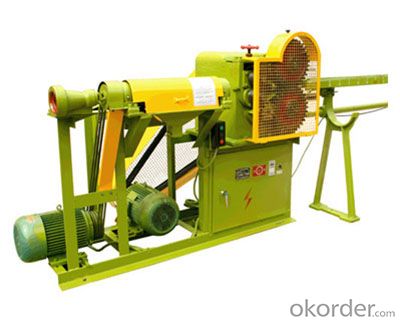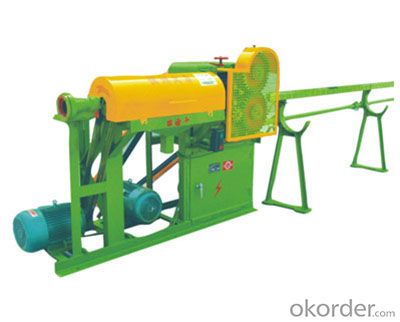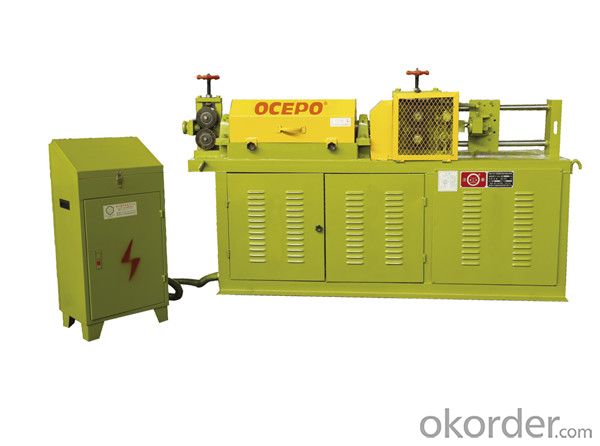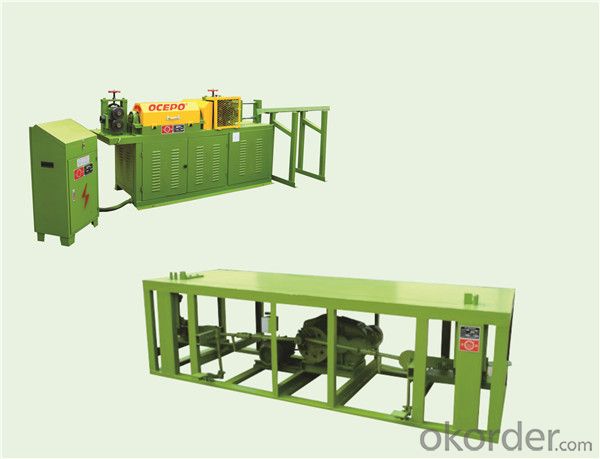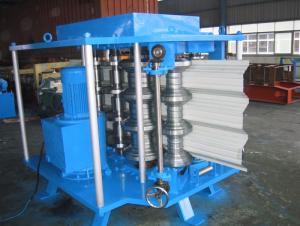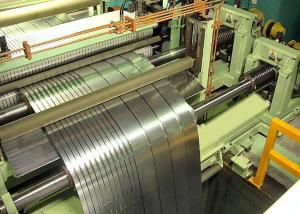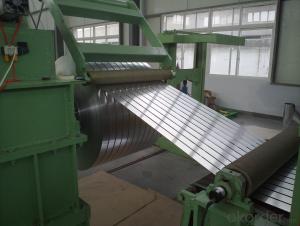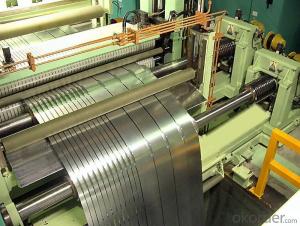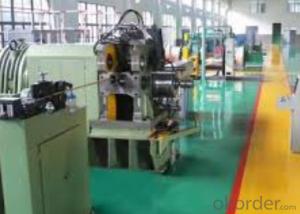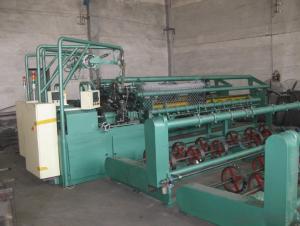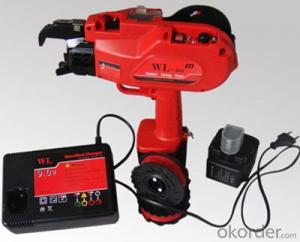Mechanical Rebar Straightener and Cutter ,straightening machine
- Loading Port:
- Tianjin
- Payment Terms:
- TT OR LC
- Min Order Qty:
- 1 unit
- Supply Capability:
- 200 unit/month
OKorder Service Pledge
OKorder Financial Service
You Might Also Like
Mechanical Rebar Straightener and Cutter ,straightening machine
Product Feature
1. It has good functions, with high efficiency and less error.
2. Speed can be adjusted. You can cut short material with low speed, and cut long material with high speed.
3. It is suitable for different workers. Unskilled workers could use it with low speed, and skilled workers could use with high speed.
Product Specification/Models
Straightening Scope ø4-ø14mm
Straightening Speed 500 ~ 900m/s
Auto Cutting Length 300-8000mm
Quantity of Cutter 3 sets
Electromotor for Cutting Model Y132M1-6
Rated Power 4.0Kw
Rated Rotational Speed 960r/min
Electromotor for Straightening Rated Rotational Speed 1440r/min
model Y132S-4
Rated power 5.5Kw
Rated Voltage 380V
Rated Frequency 50Hz
External dimensions 9860 * 1010 * 1365mm
Net weight 1070 Kg
Application
The machine is used to straighten and cut t round bar (steel rod).
Payment
T/T L/C
Delivery
Within one week
Origin
China
Minimum Order
1 set
Packaging
Plywood case
Remarks
OEM & ODM, Buyer Label can be provided.
Packing
Plywood Case
Payment
T/T L/C
Delivery
Within one week
Origin
China
Minimum Order
1 set
Packaging
Plywood case
Remarks
OEM & ODM, Buyer Label can be provided.
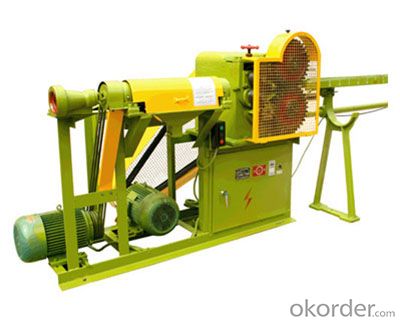
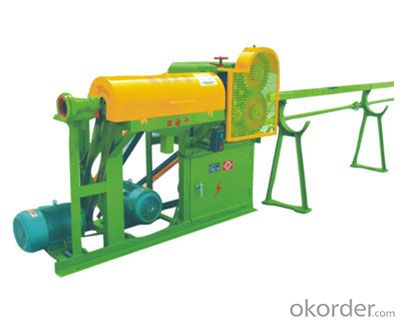
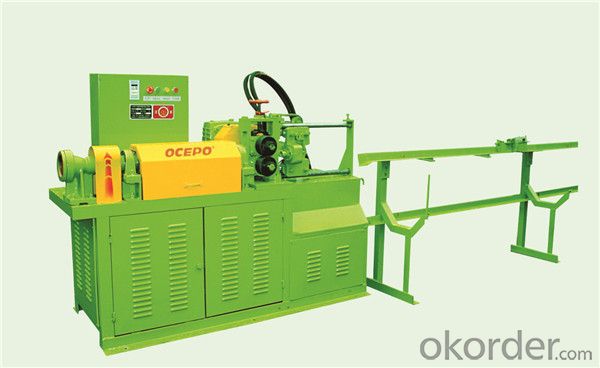
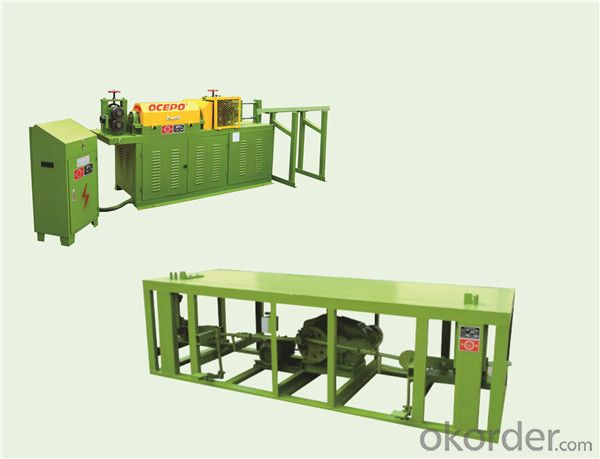
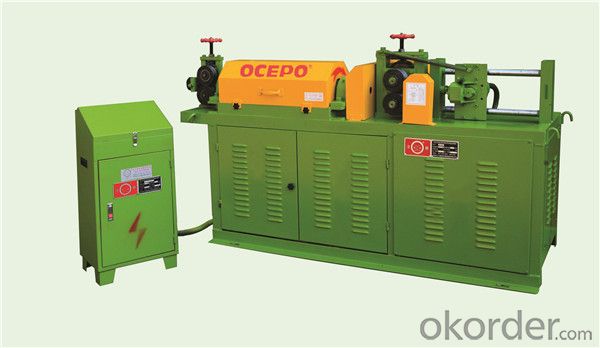
Company Direction
We are China professional manufacturer and system solutions provider of rebar connection machines,rebar processing machines and small road machines.
Founded in the 1990s. For 20 years, it has been focusing on the research, production and sales of rebar connection machines and rebar processing machines. The company is located in the capital of China - Beijing, has strong technical force, complete processing equipment and testing means. All the products are optimized by microcomputer design to reach the advanced level of industry.
- Q: How does metal straightening machinery contribute to improving the quality of metal components?
- Metal straightening machinery plays a crucial role in improving the quality of metal components by effectively removing any distortions or deformations. It provides precise and accurate straightening, ensuring that the final product meets the required specifications and tolerances. This machinery helps to eliminate any warping, bending, or twisting in the metal, resulting in a more uniform and consistent surface. Additionally, by straightening the metal, it enhances its structural integrity, strength, and durability, ultimately improving the overall quality and performance of the metal components.
- Q: Can metal straightening machinery be used for hot or cold straightening?
- Yes, metal straightening machinery can be used for both hot and cold straightening processes. The choice between hot or cold straightening depends on the specific requirements of the metal being straightened. Hot straightening involves heating the metal above its recrystallization temperature, which makes it more malleable and easier to reshape. This method is commonly used for materials like steel, where a significant amount of deformation is needed. Hot straightening can help to reduce residual stresses and improve the overall structural integrity of the metal. On the other hand, cold straightening is performed at room temperature or below. It is typically used for metals that are more sensitive to high temperatures or when only minor adjustments are required. Cold straightening is commonly used for aluminum, copper, and other non-ferrous metals. Metal straightening machinery is designed to accommodate both hot and cold straightening processes. It typically consists of rollers or press plates that apply pressure to the metal, gradually bending it back into the desired shape. The machinery can be adjusted to control the temperature and pressure applied during the straightening process, allowing for the flexibility to perform hot or cold straightening as needed. It is important to note that the specific parameters and techniques used for hot and cold straightening may vary depending on the type and condition of the metal being worked on. Proper knowledge, experience, and expertise are crucial to ensure the effective and safe use of metal straightening machinery for hot or cold straightening applications.
- Q: Are there any limitations to the shapes that can be straightened using machinery?
- There are indeed limitations to straightening shapes with machinery. The ability to straighten a shape using machinery depends on several factors, including the material, size, complexity, and type of machinery used. To begin, the material of the shape plays a significant role in determining its suitability for straightening with machinery. Materials like metals are more malleable and can be easily straightened. However, materials like ceramics or glass are less flexible and may be prone to breakage when subjected to machinery forces. Additionally, the size of the shape can limit the effectiveness of machinery in straightening. Larger or bulkier shapes may require specialized machinery or equipment with high force capabilities, which may not always be readily available or feasible. The complexity of the shape is another factor that can impede the straightening process. Shapes with intricate designs, curves, or multiple bends may be more challenging to straighten accurately using machinery. The machinery may not be able to exert enough force or may unintentionally distort the shape further during the straightening attempt. Lastly, the type of machinery used can also impose limitations. Different machinery types are designed for specific purposes, and their capabilities can vary. For instance, a press brake machine is commonly employed to straighten metal sheets, while a hydraulic press is suitable for straightening solid objects. Utilizing the incorrect machinery type may yield undesired results or even cause additional damage to the shape. In conclusion, while machinery can be highly effective in straightening various shapes, there are limitations based on factors such as material, size, complexity, and the type of machinery used. It is crucial to consider these factors and seek guidance from experts to determine the optimal approach for straightening a particular shape.
- Q: Is there a limit to the hardness of metals that can be straightened using this machinery?
- Yes, there is a limit to the hardness of metals that can be straightened using this machinery. The machinery's capability to straighten metals depends on its strength and design. If the metal exceeds the maximum hardness threshold of the machinery, it may not be possible to straighten it effectively or without causing damage to the machinery itself.
- Q: Can metal straightening machinery be used for straightening shafts or axles?
- Yes, metal straightening machinery can be used for straightening shafts or axles.
- Q: Does this machinery have any built-in features for detecting and correcting material thickness variations?
- Indeed, this machinery comes with integrated functionalities to detect and rectify discrepancies in material thickness. These functionalities encompass sensors and measurement systems that continually scrutinize the thickness of the processed material. Upon detecting any deviations, the machinery promptly modifies its settings to guarantee consistent and precise processing. Moreover, certain models may possess sophisticated algorithms and software capable of analyzing thickness data and effecting instantaneous corrections to uphold desired specifications. These inherent features serve to diminish material wastage, augment product excellence, and optimize overall efficiency within the manufacturing process.
- Q: How does metal straightening machinery handle different types of surface coatings?
- Metal straightening machinery is designed to handle different types of surface coatings in various ways depending on the specific requirements. In general, metal straightening machinery is equipped with rollers or other mechanisms that apply pressure to the metal surface in order to straighten it. When it comes to different types of surface coatings, the machinery needs to consider the characteristics of the coating to ensure that it is not damaged or compromised during the straightening process. For metal surfaces with thin and delicate coatings, such as electroplating or powder coatings, the machinery may be equipped with softer rollers or adjustable pressure settings. This helps to minimize the risk of scratching or peeling off the coating while still effectively straightening the metal. On the other hand, for metal surfaces with thicker and more durable coatings, such as galvanized or painted coatings, the machinery may utilize harder rollers or higher pressure settings. This is because these types of coatings can withstand more force without being damaged, allowing for more aggressive straightening actions. Furthermore, some metal straightening machinery may have additional features or attachments specifically designed for handling certain types of surface coatings. For example, there may be special rollers or pads with specific materials or textures that are more suitable for particular coatings. This ensures that the machinery can effectively straighten the metal without compromising the integrity of the coating. Overall, metal straightening machinery takes into consideration the different types of surface coatings by adjusting the pressure, using appropriate rollers or attachments, and employing specialized techniques to ensure that the straightening process is done without causing any damage to the coating.
- Q: What is the maximum temperature that the machinery can withstand during operation?
- The maximum temperature that the machinery can withstand during operation is 200 degrees Celsius. At this temperature, the machinery has been designed and tested to ensure that it remains fully functional and does not suffer any damage or malfunctions. Operating the machinery at temperatures higher than this can pose a risk of overheating, component failure, or other adverse effects. It is crucial to adhere to this maximum temperature limit to ensure the longevity and proper functioning of the machinery.
- Q: How does metal straightening machinery handle residual stresses in metal parts?
- Metal straightening machinery is specifically designed to handle and alleviate residual stresses in metal parts. Residual stresses occur in metal parts during the manufacturing process, often as a result of heat treatment, machining, or welding. These stresses can cause distortion, warping, or even failure of the metal parts if left untreated. Metal straightening machinery utilizes a combination of mechanical and thermal processes to relieve these stresses and restore the metal parts to their desired shape and dimensions. The machinery typically consists of hydraulic presses, rollers, or other adjustable tools that exert controlled force on the metal part. One common method used by metal straightening machinery is cold straightening. This technique involves applying force to the metal part at specific points to counteract the residual stresses. By strategically positioning the metal part and applying force in the opposite direction of the stresses, the machinery gradually bends or straightens the part until the stresses are relieved. Another technique employed by metal straightening machinery is heat straightening. This method involves heating the affected area of the metal part to a specific temperature and then applying force to straighten it. The heat helps to soften the metal, making it more malleable and allowing it to be reshaped without causing further damage. In some cases, a combination of cold and heat straightening may be used. This approach involves a two-step process where the metal part is first cold straightened to a certain extent, and then heat straightened to complete the straightening process. It is important to note that metal straightening machinery is operated by skilled technicians who understand the properties and behavior of different metals. They carefully analyze the residual stresses in the metal parts and determine the appropriate techniques and force required for straightening. This ensures that the machinery handles the residual stresses effectively without causing any further damage or compromising the structural integrity of the metal parts. Overall, metal straightening machinery plays a crucial role in handling residual stresses in metal parts. By utilizing various techniques such as cold straightening, heat straightening, or a combination of both, the machinery helps to alleviate stresses, restore the desired shape, and ensure the quality and reliability of the metal parts.
- Q: What are the common safety considerations for handling heavy loads with metal straightening machinery?
- To guarantee the well-being of workers and prevent accidents, there are various safety considerations that should be taken into account when operating metal straightening machinery for heavy loads. These considerations encompass: 1. Adequate training: It is crucial for operators to receive proper training on the safe operation of metal straightening machinery. They need to be familiar with all controls, safety features, and procedures associated with the equipment. 2. Personal protective equipment (PPE): Workers must wear suitable PPE, including hard hats, safety glasses, gloves, steel-toed boots, and high-visibility clothing. PPE safeguards against potential dangers such as falling objects, sparks, and flying debris. 3. Equipment inspection: Operators should inspect the machinery before use to ensure it is in good working condition. This entails checking for loose or damaged parts, leaks, and any safety hazards that could compromise stability or functionality. 4. Load capacity: It is essential to adhere to the maximum load capacity of the metal straightening machinery. Overloading the equipment can result in structural failure, tipping, or loss of control, endangering both the operator and nearby individuals. 5. Load securement: Prior to straightening metal, the load should be properly secured to prevent shifting or falling during the process. This may involve using clamps, chains, straps, or other suitable restraints. 6. Clear work area: The work area must be free from obstacles or hazards that could hinder safe machinery operation. This includes removing debris, ensuring adequate lighting, and marking any floor obstructions. 7. Communication: Implementing clear and effective communication protocols among workers is vital when dealing with heavy loads. Hand signals, radios, or other communication devices can be utilized to coordinate movements and prevent accidents caused by miscommunication. 8. Maintenance and servicing: Regular maintenance and servicing of the metal straightening machinery are crucial for safe operation. This includes lubricating moving parts, inspecting hydraulic systems, and promptly addressing any issues. 9. Emergency procedures: Workers should be knowledgeable about emergency procedures and have access to emergency shut-off switches or buttons. They need to know how to respond in case of equipment malfunction, power failure, or any unforeseen incidents. 10. Regular training and review: Safety protocols and procedures should be periodically reviewed and reinforced through training sessions and safety meetings. This ensures that all workers remain aware of potential hazards and adhere to proper safety practices. By considering these safety considerations, employers can establish a safer work environment when operating metal straightening machinery for heavy loads, thereby minimizing the risk of accidents or injuries.
Send your message to us
Mechanical Rebar Straightener and Cutter ,straightening machine
- Loading Port:
- Tianjin
- Payment Terms:
- TT OR LC
- Min Order Qty:
- 1 unit
- Supply Capability:
- 200 unit/month
OKorder Service Pledge
OKorder Financial Service
Similar products
Hot Searches
Related keywords




